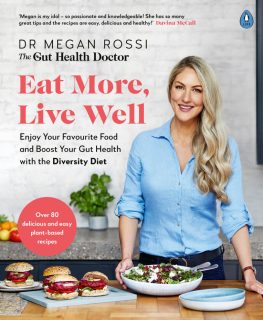I see a lot of packaged foods touting on the label that they include ‘only 4 ingredients.’
But it’s important to know that health-giving benefits don’t come from only having a handful of ingredients, but the RIGHT ingredients.
As you know if you’ve followed along for a while, good gut health is all about plant diversity. When ingredients are wholesome, it’s the more the merrier.
So, how do you decipher ingredients to know if they are ‘good’, or not so great? I dig into this in detail in ‘Eat More, Live Well’ with diagrams, but here’s a few pointers, for now.
- Never mind what the product is CALLED or the front of pack CLAIMS, head straight to the ingredient list. – Pick up a ‘blueberry cereal bar’ and you’d assume that berries are in the snack, right? Or that a cereal claiming ‘immune health’ is full of whole foods, surely? Not necessarily. Forget the front of pack name and claims and check the ingredient list. There is no hiding or marketing tricks allowed here – all the ingredients must be listed from greatest to smallest by weight.
- Look out for whole foods – If you want to eat well (and don’t have the time to make from scratch), aim to buy items that have whole foods listed within the first three ingredients. Added sugars** are best low on the list, if at all, if it’s a daily food item.
**added sugars show up on an ingredients list disguised as: glucose, dextrose, fructose, maltose, sucrose, lactose, syrup (date, maple, corn, brown rice, oat, etc.), coconut blossom nectar, honey, maltodextrin, agave nectar, fruit juice…to name just a few.
The takeaway
It’s not about fixating on food labels, enjoy your food choices. But don’t fall victim to clever marketing that might try and convince you a product is ‘healthy’ because it contains only ‘x’ ingredients. A lot of this is hype, so knowing how to decipher food labels is a good skill to have. I’m very proud of Bio&Me ingredient lists, with our granolas, porridges and muesli containing 12+ plants, and no added sugars.













